Member Spotlight | 121 lbs. Lost in a Year!
Meet Jordan L., LA Fitness member, and inspiring weight loss success story! Jordan lost 121 lbs. in one year by making a small series of changes to his diet and fitness routine.

“Seeing the changes that I’ve made already has just helped me make sure I never ever want to go back to the person I used to be and am so much happier and more confident in my own skin.”
After high school, I accepted a soccer scholarship to a big university to play soccer, and early on in my freshman year, I ripped my rotator cuff, basically ending any chance I had of playing. I lost my scholarship and eventually left the school with no backup plan because it had always just been “sports”.
While the injury healed I didn’t have a chance to work out or stay active and began to gain weight, and by the time my shoulder was fixed I had no desire to stay in shape at all and just kept sliding further and further up the weight chart.
Eventually, I just accepted that this was me now and gave up on caring. My diet was mainly fast food and whatever junk I thought sounded good from the store, but hardly ever anything proportioned or healthy.
At the beginning of 2018, I woke up and realized I couldn’t even put my own shoes on and knew something had to stop. With the help of one of my good friends, who is an actual fitness nut, I began researching new diets and exercise routines and we hatched a plan.
On May 1st, 2018, I stepped on the scale and saw it said 378.6 lbs. I nearly fell over.
I knew I was heavy but to see a number that high instantly put true fear into me. I was worried about life, longevity, health issues, and multitudes of other things. So on May 1st, the journey began, and I prepped my first few days of meals and then everything else so that I couldn’t be tempted to have just a quick little snack or anything else.
It was about this time that my fiancé had gastric bypass surgery and was on a limited food intake as well, so we thought it would help both of us. The weight came off fast, and I nearly threw a party when I lost my first 50 lbs.

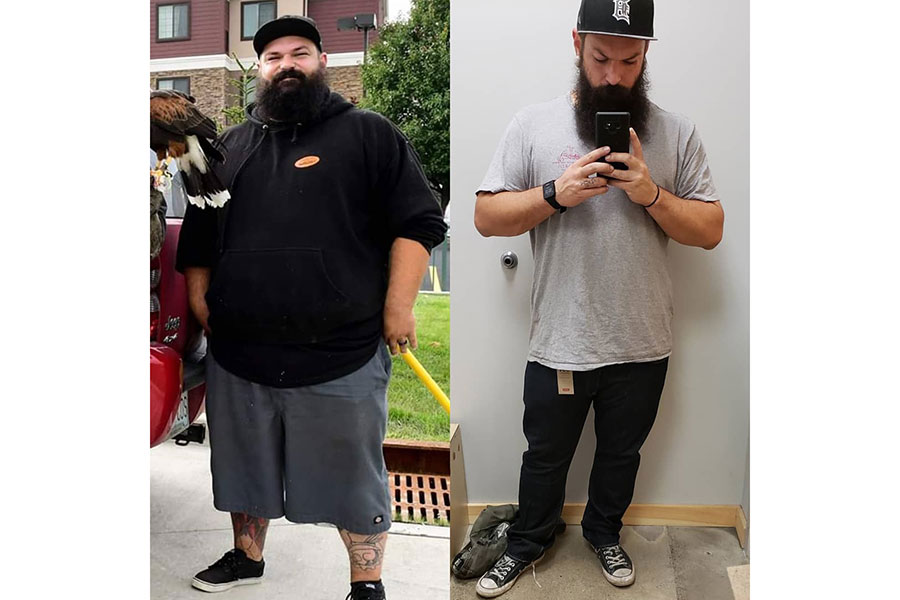
By this time my clean strict diet was 2nd nature and I rarely had urges to cheat. Every 3-5 weeks I would go have sushi, a big steak, or Korean BBQ of some kind as a reward meal, but for the most part, I was content with the diet I was eating.
I would (and still am) eating two meals a day consisting mainly of lean ground beef, chicken, eggs, turkey bacon, avocados and organic peanut butter for a snack. It is insanely strict, but I look at it like this: I had fun eating whatever-whenever I wanted, and it got me overweight. So it was time to do whatever was required to get it off and get myself back to a place where I was happy with who I was.
In October of 2018, I ran my first Tough Mudder in Northern California. I was running about 8-10 miles a week on the treadmill at the gym and lifting weights 5 days a week and I felt phenomenal. But I very quickly became aware that I was still too heavy and had much progress still to achieve when I was on the course. I ran the race with my best friend and fiancé, and together we crossed the finish line in a little under 4:30. It was an amazing experience and sort of re-lit my desire to push harder and farther in my training.
I kept up with the training and increased to 12-18 miles a week running, but this time I was doing it outside on trails and in the hills to incorporate realistic elevation changes and to get some fresh air. Many people dislike treadmill miles and once I began to run outside I understood why.
I live a little over a mile and a half from my local LA Fitness so I started to wake up and run to the gym, sit in the sauna and stretch out for 20 minutes, and run back every morning. It was the perfect split that I needed and combined with 6 nights of weights per week I went solo into my second Tough Mudder in April of 2019 and managed a race time of 2:56 on one of the tougher courses in the Tough Mudder line up in the country.
The race is at Glen Helen off-road park and the hills there are absolutely insane. My Garmin tracker registered almost 2,600 feet of elevation gain over the 9-mile course. It definitely pushed me to my limit.
On May 1, 2019, with 1 year of life change under my belt, I stepped on the scale and it read 257.7 lbs. I had lost 121 lbs. in a year and had gone from a size 54 “loose fit” Dickies to size 36 501 Levi’s and from 4XL-Tall t-shirts to XL t-shirts.
I felt accomplished but knew that I had so much more to go. I’ve kept up on everything and plan to for as long as I possibly can. Seeing the changes that I’ve made already have helped me make sure I never ever want to go back to the person I used to be and I’m so much happier and more confident in my own skin.
I would still like to lose another 30-50 lbs. I don’t necessarily have a goal weight, but more of a performance goal. I am fairly hooked on running obstacle course races (mainly the Tough Mudder series) and for now, I know that I will need to be down closer to 200 lbs. to be able to run the time and distances I want.
My short-term goal is to be able to run either the 8-hour “Tougher Mudder” race and complete somewhere in the area of 17-20 miles in those 8 hours. Or to be able to run the 10 miles “classic” race both Saturday and Sunday in one weekend with both race times being under 3 hours.
My long-term goals include a sub 1-hour 10K on road, as well as completing the 24 hours “World’s Toughest Mudder” and managing 50 miles.
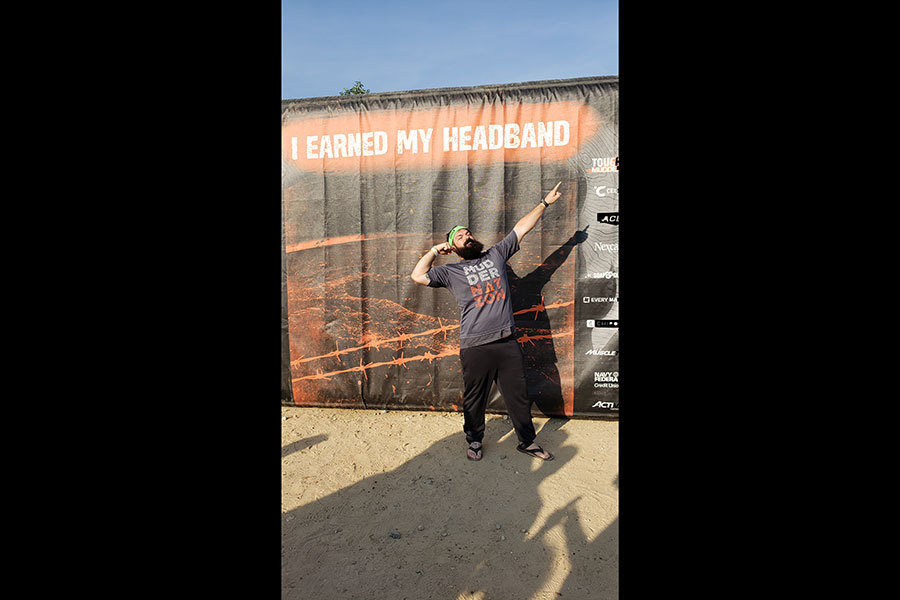
The training was really the missing part of my routine, and I feel what has helped me stick to my diet and help achieve my goals. When I started this journey, I changed my diet and not really my activity level. I started eating really clean, whole foods that were calorie deficient and since my job has me working mostly on my feet, I didn’t really need to train much.
I was walking 5-6 miles per day at work, so my activity levels were already fairly high. But after about 3 months, I realized I was getting soft and had no muscle development and that my skin wasn’t really shrinking. And the thought of looking deflated scared me, so I stopped on the way home from work one day and signed up at the gym.
I started with a 3 day per week routine just to get everything used to moving and working again and eventually ended up in the gym 6 days per week. Once I started to see muscle growth and my body actually changing shapes rather than just shrinking, I was hooked. I used the gym as the place to go whenever I was craving something off-diet, or down on myself about something, or thinking I should have been making more progress.
It turned into the place I went when I just needed everything to go right, and because of that some of my initial weight and performance goals got knocked down quicker than I expected. When I ran my first Tough Mudder I was on course for almost four and a half hours, and while I never stopped moving on course it was clearly a snail’s pace. Once I dove harder into my training my race time dropped to 2:56!

Don’t give up, anyone can do it. Honestly, I think the hardest part of everything was to get started. Not cheating on your diet or giving up when you’re having a rough week is obviously a challenge. But one of the biggest and hardest things to overcome is that fitness and diet advice is usually given by people with single digit body fat, cut physiques, and years of discipline and dedication under their belt.
While it is easy to think this is motivation, it really was intimidating at first. A few friends that have jumped on the get healthy bandwagon said it best. A lot of the advice or influencers or even coaches don’t understand that you can’t just “stop being fat”, and it’s hard to take advice from someone who looks like they’ve never had the same struggle or barrier of entry that you are currently facing.
Changing your life and body is a long-distance race, not a sprint. But so much on social media makes it seem like if you don’t lose 150lbs in 6 months that you’re a failure and clearly weren’t drinking enough of their special cleanse they’re promoting.
I have a friend who helped me a lot the first few months and made me check in every day. He said it didn’t matter if there was progress or not. As long as I had a better day eating/exercise wise than I had been having, it was a good day, and that really is what pushed me through until I was able to stand on my own and be my own motivation.
I’ve had people reach out to me on social media after posting my story that said they were also too intimidated by a lot of the people in the fitness world to start, and that seeing my story had helped them want to get back at it. I’ve helped them the best I could, but I think the biggest problem for heavy people currently is that there just aren’t enough not-perfect-physique people in the industry to ask for advice.
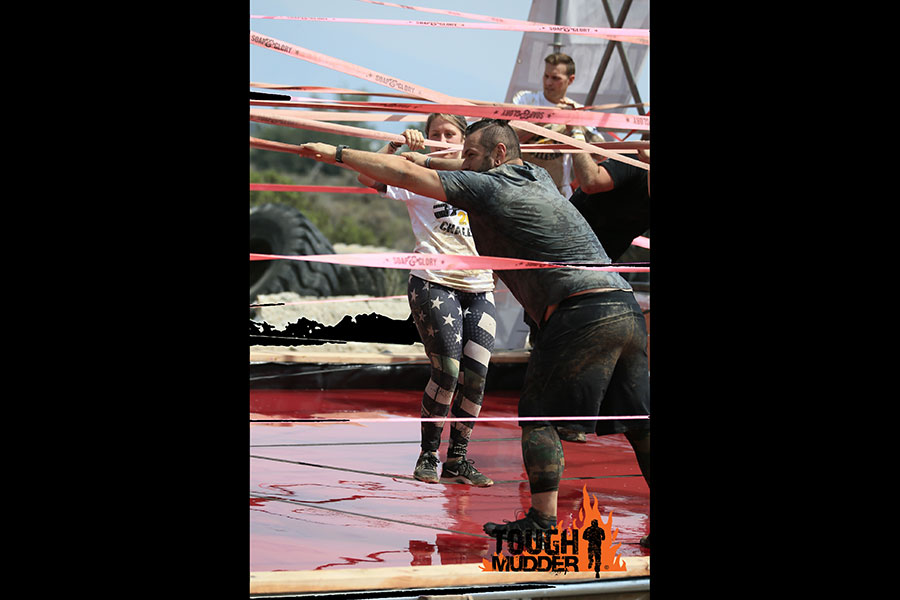
Meet Jordan L., LA Fitness member, and inspiring weight loss success story! Jordan lost 121 lbs. in one year by making a small series of changes to his diet and fitness routine.
Meet Summer S., LA Fitness Member and fitness advocate whose journey to better health and fitness truly began after she was diagnosed with an autoimmune disease.


I just started to go to LA Fitness. I’m a 23-year-old female, I weigh 205 lbs., and I’m 5’4″. I struggle with food. I’ve been on multiple diets, lost weight, restricted myself and end up giving up because it wasn’t sustainable, gaining it back. Calorie counting just seems very tedious and writing things down as well. Is there a way of eating that doesn’t involve measuring out everything in order to lose weight? Or any advice/suggestions?
– Marissa R.

I agree that you should remove the focus on portions and calorie restriction. For chronic dieters, experts in weight management recommend making permanent lifestyle changes the goal. Creating realistic goals and developing healthy habits that last are key to an “un-diet” approach. No mention of calories or measurements in The National Weight Control Registry’s summary of its registrants’ four most common habits*: eat breakfast every day, weigh themselves once a week, watch less than 10 hours of TV per week and exercise about 1 hour daily.
Knowledge is power! I believe that a simple foundational understanding of nutrition can help frame your outlook and shift your thinking away from weight, towards nourishing your body. Have you read our Living Healthy articles on nutrition basics, weight loss tips, a Mediterranean style of eating, mindfulness, and social support? For more in-depth learning consider a mass open online course (MOOC) on nutrition fundamentals. Several are free (taken as an audit, not for credit) and available from trusted sources like respected U.S. universities with credentialed instructors.
*The NWCR is the largest prospective investigation of long-term successful weight loss maintenance. http://www.nwcr.ws/Research/default.htm accessed 6/4/2019
Resources:
– Debbie J., MS, RD
This article should not replace any exercise program or restrictions, any dietary supplements or restrictions, or any other medical recommendations from your primary care physician. Before starting any exercise program or diet, make sure it is approved by your doctor.
Some questions have been edited for length and/or clarity.
 Have a nutrition question? Our registered dietitian is ready to help!
Have a nutrition question? Our registered dietitian is ready to help!
Email nutrition@lafitness.com or submit your question below and it may be featured in an upcoming article!
LA Fitness, registered dietitian, Debbie James, helps a member see dieting in a different way. This is for everyone that has ever failed at a diet before.
Debbie James, RDN, helps educate a member who doesn’t know where to start when it comes to healthier eating. Read her advice for some helpful beginner tips!
Hormone levels and lifestyle are likely causes for the metabolism and weight change from prior decades. Targeting these two areas are likely to bring about the most benefit.


Hi, my name is Jordan, I am a new member of LA Fitness and I also have a personal trainer. He thought it would be a good idea to contact you to get some pointers on how I should eat. I am lost when it comes to that. I am 377 lbs., 5’4”, and 31 years old. Also, what should I look for when eating food? Calories? Fat? Sugar? Thank you!
– Jordan

I’m so glad you reached out! It can be overwhelming navigating thousands of food choices and not knowing where to start. Try following these steps to begin:
For overall wellness, increasing vegetable intake is usually step one. Veggies are low-calorie and high nutrient-dense foods that you can eat a multitude of ways – as an entrée, side dish, snack, raw, juiced, oven-baked, and pureed in soup or sauce. For an equivalent 100 calories from starch or animal meat/milk, you can get nearly an equal amount of protein from vegetables. Aim for 3-5 vegetables daily.
Step two would be to choose the healthiest foods in other groups – raw fruit, whole grain products, lean meats, and plant fats. Examples would be a whole apple vs. applesauce, baked potato vs. French fries, baked fish vs. fish sticks, and avocado vs. cheese. You don’t need a formal education to identify wholesome choices, though reading labels can help you determine which choice within a food group is lowest in calories, fat or sugar, based on your personal health goals.
Next, balance food groups to get the nutrients you need by making ¾ of your intake from vegetables, grains, beans, fruit and nuts/seeds, remaining ¼ from animal sources. Shifting from a ham & cheese 3-egg omelet to a spinach & mushroom 1-egg scramble in a whole wheat tortilla with salsa exemplifies this balance.
Portion control is step four. You need to pay attention to the actual amount you eat! A couple tablespoons of unsalted nuts are adequate, a bowlful is too much. A few ounces of pork tenderloin are good, a half-pound is excessive.
That’s enough to get you started without getting too detailed or bogged down in ‘food rules’ that can de-motivate you. Keep following us for helpful nutrition and healthy living advice!
– Debbie J., MS, RD
This article should not replace any exercise program or restrictions, any dietary supplements or restrictions, or any other medical recommendations from your primary care physician. Before starting any exercise program or diet, make sure it is approved by your doctor.
Some questions have been edited for length and/or clarity.
 Have a nutrition question? Our registered dietitian is ready to help!
Have a nutrition question? Our registered dietitian is ready to help!
Email nutrition@lafitness.com or submit your question below and it may be featured in an upcoming article!
LA Fitness, registered dietitian, Debbie James, helps a member see dieting in a different way. This is for everyone that has ever failed at a diet before.
Debbie James, RDN, helps educate a member who doesn’t know where to start when it comes to healthier eating. Read her advice for some helpful beginner tips!
Hormone levels and lifestyle are likely causes for the metabolism and weight change from prior decades. Targeting these two areas are likely to bring about the most benefit.
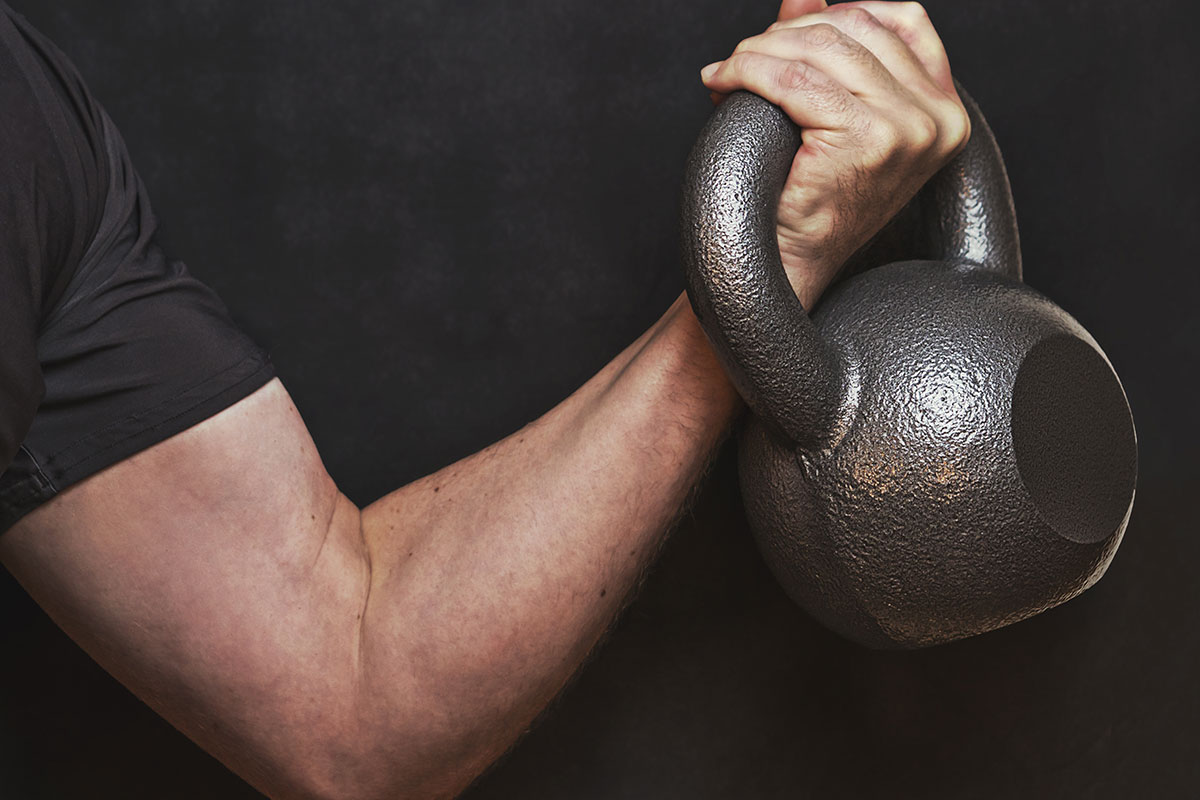

I wanted to know what’s the best way to boost metabolism and lose weight for a man once you’re over 40?
– Jermaine H.

Fighting midlife weight gain is certainly a challenge! Hormone levels and lifestyle are common causes for the metabolism and weight change from prior decades. Targeting these two areas are likely to bring about the most benefit. Thus, it is wise to visit with your physician for a checkup. Amping up your physical activity during the day (walking, cleaning, washing your own car, dancing) outside of exercise is recommended to help lose weight in middle age.
At the gym and in the kitchen, the goal is to preserve muscle mass (and therefore metabolic function) and promote a calorie deficit. ProResults® Trainer, Morgan Connors, advises strength training and cardio workouts. Nutritionally, you should eat the bulk of your calories earlier in the day, include protein at each meal, limit added sugars and alcohol, and get enough fiber and water. Consuming green tea and chili peppers temporarily boost metabolic rate… a little. Other foods purported to raise metabolism include fish, egg whites, coffee, milk, yogurt, coconut oil, lentils, red beans, cinnamon, garlic, broccoli, and berries.
Sources:
– Debbie J., MS, RD
This article should not replace any exercise program or restrictions, any dietary supplements or restrictions, or any other medical recommendations from your primary care physician. Before starting any exercise program or diet, make sure it is approved by your doctor.
Some questions have been edited for length and/or clarity.
 Have a nutrition question? Our registered dietitian is ready to help!
Have a nutrition question? Our registered dietitian is ready to help!
Email nutrition@lafitness.com or submit your question below and it may be featured in an upcoming article!
LA Fitness, registered dietitian, Debbie James, helps a member see dieting in a different way. This is for everyone that has ever failed at a diet before.
Debbie James, RDN, helps educate a member who doesn’t know where to start when it comes to healthier eating. Read her advice for some helpful beginner tips!
Hormone levels and lifestyle are likely causes for the metabolism and weight change from prior decades. Targeting these two areas are likely to bring about the most benefit.
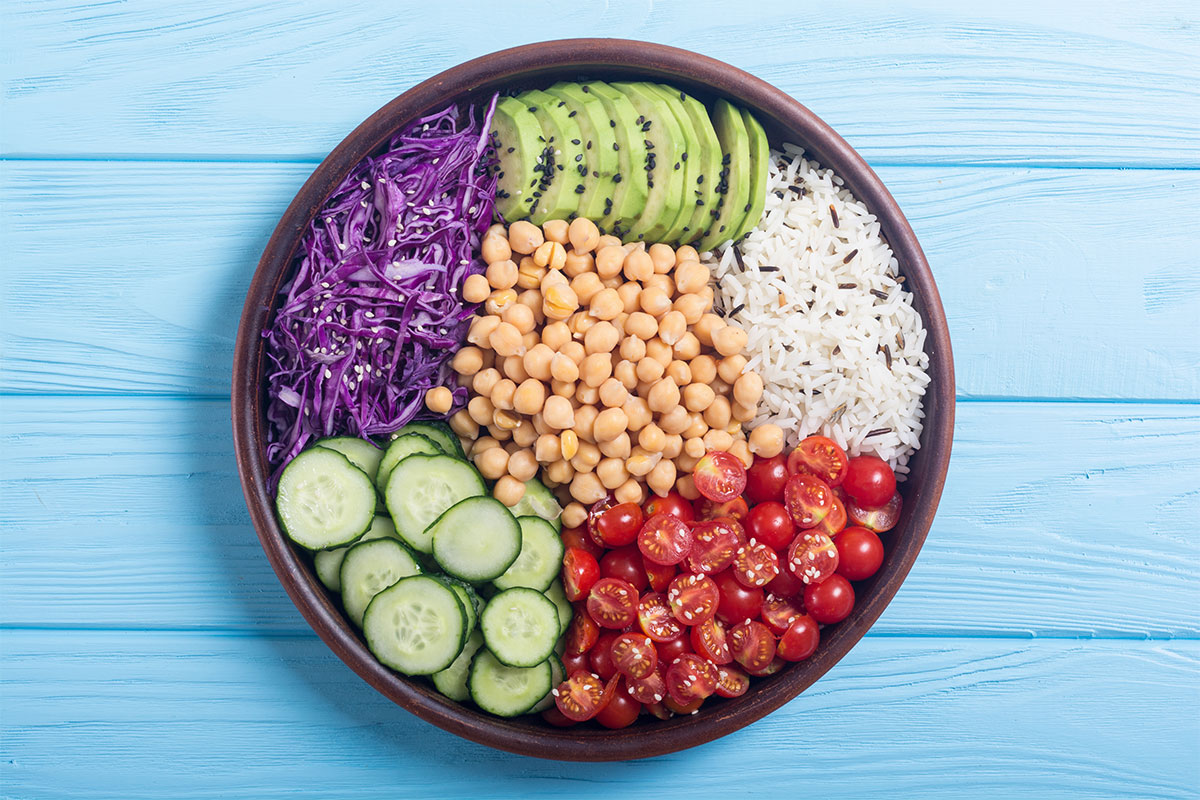

Hello, I am vegetarian and do not eat meat or eggs but do eat dairy products. Can you let me know the following?
Thanks for your help.
– Sunil J.

Here are your three-fold answers:
1. A well-balanced lacto-vegetarian diet can be sufficient to promote muscle growth and strength when paired with an appropriate workout plan. The bigger you are and the more you burn the more nutrition you need – but also the more you can eat! A sample 2,800 calorie day might look like the following. Also see our recent suggestions for meatless meals.
Nutrient analysis using www.FitDay.com by a Registered Dietitian Nutritionist = 127 gm Protein (16% calories). Findings were used along with RDN’s professional judgment.
2. Before strength training (assuming last meal was more than 3 hours prior) a small snack incorporating a carbohydrate with some protein, but little fat can fuel your workout and help prevent muscle protein breakdown. One example is rice or oat square cereal with non-fat milk and strawberries. Another would be noodles and chunky marinara with a soy meatball. After working out, replenish energy stores and promote muscle repair and rebuilding with a similar recovery snack within a half hour. Graham crackers with peanut butter and banana slices is an option.
3. Protein powder aids in providing variety and convenience to meals or snacks on the go. When mixed with fluid as a beverage, protein powder is more readily absorbed than a solid protein you’d need to chew and break down. A balance of soy, casein, and whey can offer a more sustained delivery of protein.
– Debbie J., MS, RD
This article should not replace any exercise program or restrictions, any dietary supplements or restrictions, or any other medical recommendations from your primary care physician. Before starting any exercise program or diet, make sure it is approved by your doctor.
Some questions have been edited for length and/or clarity.
 Have a nutrition question? Our registered dietitian is ready to help!
Have a nutrition question? Our registered dietitian is ready to help!
Email nutrition@lafitness.com or submit your question below and it may be featured in an upcoming article!
LA Fitness, registered dietitian, Debbie James, helps a member see dieting in a different way. This is for everyone that has ever failed at a diet before.
Debbie James, RDN, helps educate a member who doesn’t know where to start when it comes to healthier eating. Read her advice for some helpful beginner tips!
Hormone levels and lifestyle are likely causes for the metabolism and weight change from prior decades. Targeting these two areas are likely to bring about the most benefit.
Be the first to know about exclusive
content, deals and promotions